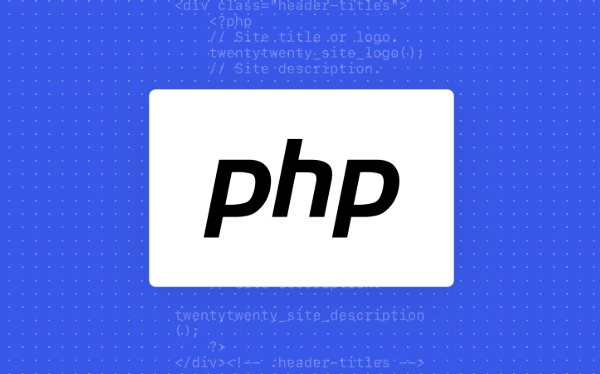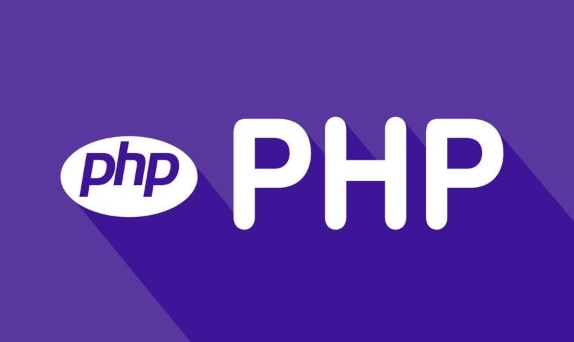The trim() function of PHP can be used to remove whitespace characters or other specified characters at the beginning and end of a string. 1. By default, trim() removes spaces, tabs (\t), line breaks (\n), carriage return (\r), empty bytes (\0), and vertical tabs (\x0B); for example, trim(" \n\tHello World!\r\n ") outputs Hello World!. 2. You can specify the characters to be removed through the second parameter, such as trim("---Hello World!---", "-") to return Hello World!, and support multiple characters, such as trim("xxxyour-string-yyyx", "xy") to get your-string. 3. Notes include: character-by-character checking rather than overall matching, no need to escape ordinary characters, and no affecting multi-byte characters. 4. Common applications include: cleaning form input, processing CSV data, analyzing log files and cleaning before string splicing.

Sometimes when we process strings, we will encounter unwanted characters before and after, such as spaces, line breaks or other symbols. At this time, PHP's trim() function will be used to "cut out" these unnecessary content.

trim() is most commonly used to remove whitespace characters at the beginning and end of a string, but it actually supports removing other characters you specify.
How to use trim to remove default whitespace characters
PHP's trim() function will remove the following blank class characters by default:

- Spaces
- Tab characters (
\t) - Line breaks (
\n) - Carriage return character (
\r) - Null bytes (
\0) - Vertical tab character (
\x0B)
For example:
$str = " \n\tHello World!\r\n "; echo trim($str);
The output is:

Hello World!
This usage is very common, especially when processing user input, such as data read from a form or file, which may have many invisible blanks before and after, and it will be much cleaner after processing with trim() .
How to customize the characters to be removed
If you not only want to remove whitespace characters, but also want to delete some specific characters, such as quotes, commas or other symbols, you can specify them in the second parameter of trim() .
The syntax is like this:
trim(string $string, string $character_mask): string
For example:
$str = "--Hello World!---"; echo trim($str, "-");
The result is:
Hello World!
Note: trim() starts deleting from both sides until it encounters the first character not in $character_mask , and will not remove the middle ones.
You can pass multiple characters in, for example:
trim("xxxyour-string-yyyx", "xy"); This will remove the x and y at the beginning and end, and the result will become "your-string" .
Notes and FAQs
There are several small details that are easily overlooked when using trim() :
- The characters in the second parameter are "checked one by one" and do not match the entire string together.
- If you accidentally write
trim($str, "abc"), it will remove a, b, or c, instead of just removing the combination "abc". - Don't forget to escape special characters. For example, if you want to remove the slash
/, just write it in directly, but if you use regular expression-related functions, you should pay attention to the difference. - It has no effect on multi-byte characters such as Chinese, it is just a character at the byte level.
Give an example that is not right:
trim("abbaTestabb", "ab");
// The result is "Test"Because the first two abs are removed, the ending abs are also removed.
Practical application suggestions
- Form submission data cleaning:
trim($_POST['username'])can prevent users from accidentally entering the front and back spaces. - When processing CSV file contents, fields may have some weird symbols, and you can use
trim($field, "\"' ")to remove quotes and spaces. - In log analysis, invalid characters on the head and tail of each line of log are cleaned.
- String pre-stitching to avoid the appearance of unnecessary connection symbols.
Basically that's it. Although it is simple, it can save a lot of trouble if it is used well in the project.
The above is the detailed content of PHP trim characters from a string. For more information, please follow other related articles on the PHP Chinese website!

Hot AI Tools

Undress AI Tool
Undress images for free

Undresser.AI Undress
AI-powered app for creating realistic nude photos

AI Clothes Remover
Online AI tool for removing clothes from photos.

Clothoff.io
AI clothes remover

Video Face Swap
Swap faces in any video effortlessly with our completely free AI face swap tool!

Hot Article

Hot Tools

Notepad++7.3.1
Easy-to-use and free code editor

SublimeText3 Chinese version
Chinese version, very easy to use

Zend Studio 13.0.1
Powerful PHP integrated development environment

Dreamweaver CS6
Visual web development tools

SublimeText3 Mac version
God-level code editing software (SublimeText3)

Hot Topics
 What is PHP, and why is it used for web development?
Jun 23, 2025 am 12:55 AM
What is PHP, and why is it used for web development?
Jun 23, 2025 am 12:55 AM
PHPbecamepopularforwebdevelopmentduetoitseaseoflearning,seamlessintegrationwithHTML,widespreadhostingsupport,andalargeecosystemincludingframeworkslikeLaravelandCMSplatformslikeWordPress.Itexcelsinhandlingformsubmissions,managingusersessions,interacti
 How do I stay up-to-date with the latest PHP developments and best practices?
Jun 23, 2025 am 12:56 AM
How do I stay up-to-date with the latest PHP developments and best practices?
Jun 23, 2025 am 12:56 AM
TostaycurrentwithPHPdevelopmentsandbestpractices,followkeynewssourceslikePHP.netandPHPWeekly,engagewithcommunitiesonforumsandconferences,keeptoolingupdatedandgraduallyadoptnewfeatures,andreadorcontributetoopensourceprojects.First,followreliablesource
 How to set PHP time zone?
Jun 25, 2025 am 01:00 AM
How to set PHP time zone?
Jun 25, 2025 am 01:00 AM
TosettherighttimezoneinPHP,usedate_default_timezone_set()functionatthestartofyourscriptwithavalididentifiersuchas'America/New_York'.1.Usedate_default_timezone_set()beforeanydate/timefunctions.2.Alternatively,configurethephp.inifilebysettingdate.timez
 How do I validate user input in PHP to ensure it meets certain criteria?
Jun 22, 2025 am 01:00 AM
How do I validate user input in PHP to ensure it meets certain criteria?
Jun 22, 2025 am 01:00 AM
TovalidateuserinputinPHP,usebuilt-invalidationfunctionslikefilter_var()andfilter_input(),applyregularexpressionsforcustomformatssuchasusernamesorphonenumbers,checkdatatypesfornumericvalueslikeageorprice,setlengthlimitsandtrimwhitespacetopreventlayout
 What is data serialization in PHP (serialize(), unserialize())?
Jun 22, 2025 am 01:03 AM
What is data serialization in PHP (serialize(), unserialize())?
Jun 22, 2025 am 01:03 AM
ThePhpfunctionSerialize () andunserialize () AreusedtoconvertcomplexdaTastructdestoresintostoraSandaBackagain.1.Serialize () c OnvertsdatalikecarraysorobjectsraystringcontainingTypeandstructureinformation.2.unserialize () Reconstruct theoriginalatataprom
 How do I embed PHP code in an HTML file?
Jun 22, 2025 am 01:00 AM
How do I embed PHP code in an HTML file?
Jun 22, 2025 am 01:00 AM
You can embed PHP code into HTML files, but make sure that the file has an extension of .php so that the server can parse it correctly. Use standard tags to wrap PHP code, insert dynamic content anywhere in HTML. In addition, you can switch PHP and HTML multiple times in the same file to realize dynamic functions such as conditional rendering. Be sure to pay attention to the server configuration and syntax correctness to avoid problems caused by short labels, quotation mark errors or omitted end labels.
 What are the best practices for writing clean and maintainable PHP code?
Jun 24, 2025 am 12:53 AM
What are the best practices for writing clean and maintainable PHP code?
Jun 24, 2025 am 12:53 AM
The key to writing clean and easy-to-maintain PHP code lies in clear naming, following standards, reasonable structure, making good use of comments and testability. 1. Use clear variables, functions and class names, such as $userData and calculateTotalPrice(); 2. Follow the PSR-12 standard unified code style; 3. Split the code structure according to responsibilities, and organize it using MVC or Laravel-style catalogs; 4. Avoid noodles-style code and split the logic into small functions with a single responsibility; 5. Add comments at key points and write interface documents to clarify parameters, return values ??and exceptions; 6. Improve testability, adopt dependency injection, reduce global state and static methods. These practices improve code quality, collaboration efficiency and post-maintenance ease.
 How do I execute SQL queries using PHP?
Jun 24, 2025 am 12:54 AM
How do I execute SQL queries using PHP?
Jun 24, 2025 am 12:54 AM
Yes,youcanrunSQLqueriesusingPHP,andtheprocessinvolveschoosingadatabaseextension,connectingtothedatabase,executingqueriessafely,andclosingconnectionswhendone.Todothis,firstchoosebetweenMySQLiorPDO,withPDObeingmoreflexibleduetosupportingmultipledatabas






